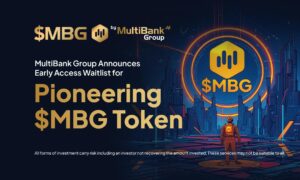Bitcoin is a term that most have become all too familiar with. From its early days to the rapid rise in value, to the current stipulations regarding a crash or a second boom, many know about Bitcoin, but few know what it is. Like all cryptocurrencies, Bitcoin is a blockchain currency with a finite amount of “blocks” which can be mined. The value of Bitcoin units is completely determined by how many are in circulation, how many are left, and how much people are willing to exchange for them. They are unregulated, and their value rises and falls regularly. While simply owning and using Bitcoin is an exciting process, mining is something altogether on its own. Let’s explore, from a beginner’s perspective, what Bitcoin mining is.
What is Bitcoin, and How can it be ‘Mined?’
Okay, first and foremost, we need to clarify what blockchain is and how it works. Bitcoin, being a blockchain cryptographic currency, has several “blocks.” These blocks each have their own unique cryptographic identifier. This identifier is called a hash, and a hash is always 64 digits. Within these blocks exists the individual ‘coin’ that is the currency. Each of these coins also boasts its cryptographic identifier.
The reason that Bitcoin uses this method called the blockchain is to track the existence of these ‘coins.’ Essentially, Bitcoin, and other cryptocurrencies, are like sand being poured into buckets. Once one bucket is full, it overflows into the next bucket, and then the next. Imagine that each of these buckets has its name, and each grain of sand has its name. Thus, the sand can be traced back to the first bucket it was found in, and all of the buckets it traveled through. This process for Bitcoin allows it to never be owned by more than one person at a time and can ensure that it is always legitimate. It can also help ensure it is not used for criminal activity.
So what is Bitcoin mining? Imagine that within our buckets of sand, several buckets are full, but have not yet been found. Mining Bitcoin is attempting to discover those buckets. In this case, those buckets are our blocks within the blockchain, and discovering them is finding their 64-digit hexadecimal identifier.
Why Mine Bitcoin?
So why put so much effort into solving complex math problems to discover a unique Bitcoin block? Because you get rewarded! This new-age treasure hunt does have buried treasure…only not in the way you might think. Discovering a new block in the blockchain does not give you all of the cryptocurrency in it. That currency is available to be purchased and brought into circulation, and that block is introduced as well. The first miner gets rewarded for the discovery, typically by receiving cryptocurrency. Occasionally, there are repeat awards following this, as the first to discover the block possesses a certain type of discoverer’s relationship to it.
This reward is sometimes greater than others depending on the block discovered.
What’s the Catch?
The catch of Bitcoin mining is that it requires immense computing power to do it. Most people don’t have an at-home setup capable of effective Bitcoin mining, and the process can be quite expensive. It also can be unfriendly to the environment. However, there are several ways to get involved in mining Bitcoin, even if you are a novice.
Services like Gryphon Digital Mining offer environmentally responsible Bitcoin mining, wherein you can safely support investments in Bitcoin mining. There are also mining pools, solo mining, and essential opportunities to place wagers on your ability to mine a block successfully. This can be where things get a little bit confusing.
Essentially, Bitcoin mining is calculated, mathematical gambling. Several blocks exist within unique permutations of 64 digits or hashes. Finding these costs a lot of money as the computing power required is expensive. In several cases, you may spend the same amount of money as you receive back in reward for finding these blocks. In some cases, you may spend money mining and never successfully mine a block. However, you may also mine several blocks for the first time and significantly offset your expenditures.
This is the essence of cryptocurrency and Bitcoin mining. It’s a calculated risk. If you are interested in Bitcoin mining, the best decision you could make is to continue researching the process, and the unique pieces. Understanding this process more will let you best decide how to engage in the Bitcoin mining process.



































